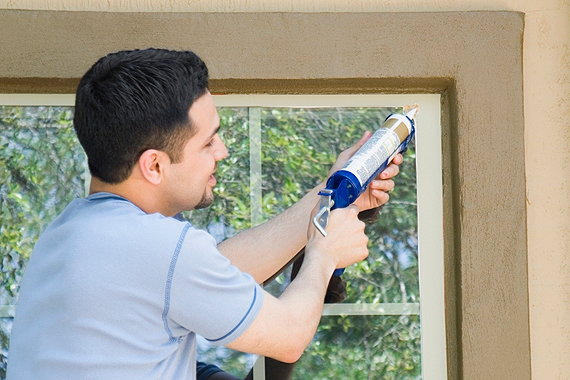Introduction
Fixing an air leak may seem like a minor issue, but it can have significant implications for the efficiency, comfort, and safety of your home or building. From increased energy consumption to moisture problems, a small air leak can lead to a cascade of costly headaches.

Image: www.youtube.com
Understanding Air Leaks
Air leaks occur when air escapes or enters a space due to openings in the building envelope, which includes walls, windows, doors, and the roof. These leaks can result from a variety of factors, including structural damage, improper installation, or wear and tear over time.
Diagnosing an Air Leak
Before attempting repairs, it’s crucial to accurately diagnose the location and extent of the air leak. This can be achieved through a variety of methods, including:
- Blower Door Test: A specialized fan is used to create negative pressure in the building, which helps identify areas where air is leaking into or escaping from the space.
- Infrared Camera Inspection: Using an infrared camera, trained professionals can detect areas with temperature differences that may indicate air leaks.
- Smoke Pencil: A smoke pencil releases a thin stream of smoke that can help visualize air movement and locate leaks.
Fixing an Air Leak
The specific repair method for an air leak depends on its location and cause. Some common techniques include:
- Caulking and Weatherstripping: For leaks around windows, doors, and other openings, caulking or weatherstripping can create an airtight seal.
- Sealant: For air leaks in structural components, such as walls or roofs, a sealant can effectively fill gaps and prevent air infiltration.
- Gaskets: Specific gaskets can be used to create airtight connections between appliances or equipment.

Image: www.houselogic.com
Tips and Expert Advice
In addition to the above methods, consider these tips for preventing and fixing air leaks:
- Regular Maintenance: Inspect your home or building regularly and address small leaks promptly before they escalate into larger problems.
- Professional Help: If you’re not comfortable diagnosing or fixing air leaks yourself, don’t hesitate to contact a qualified contractor or energy auditor for assistance.
FAQs
Q: What are the signs of an air leak?
A: Increased energy consumption, drafts, moisture problems, and inconsistent temperatures can indicate air leaks.
Q: Can air leaks be dangerous?
A: Yes, air leaks can compromise indoor air quality, increase the risk of mold growth, and contribute to respiratory issues.
Q: How much does it cost to fix an air leak?
A: The cost depends on the size and location of the leak, but it’s generally an affordable repair that can save you significant money in the long run.
How To Fix Air Leak
Conclusion
Fixing air leaks is essential for maintaining a comfortable, energy-efficient, and healthy indoor environment. By implementing these strategies, you can restore airtightness in your home or building and reap the benefits of reduced energy consumption, improved comfort, and enhanced indoor air quality.
If you’re interested in learning more about air leaks or how to fix them, consider researching reputable sources such as the U.S. Department of Energy or the Environmental Protection Agency.